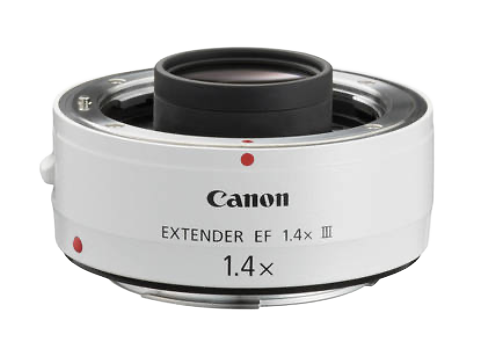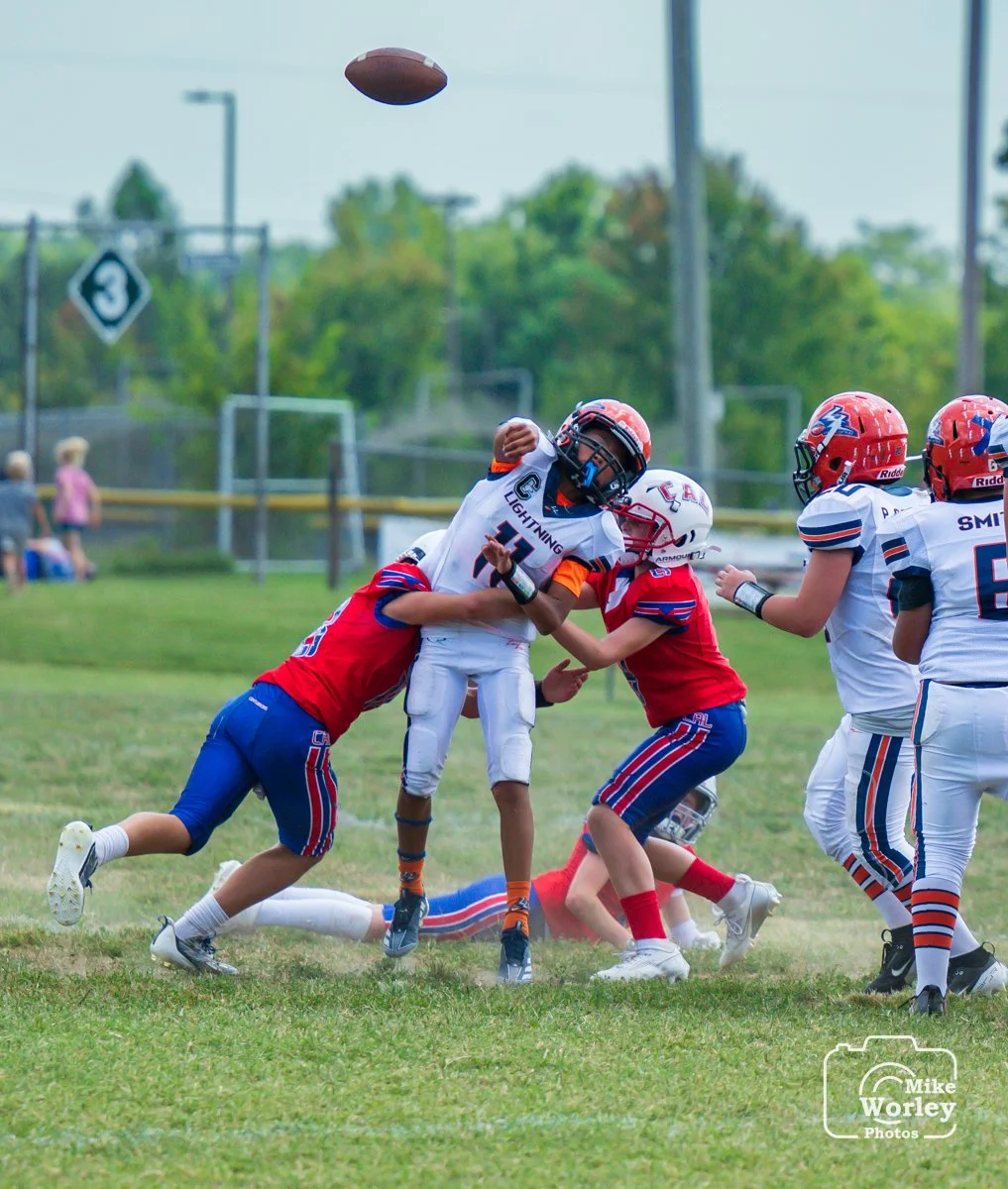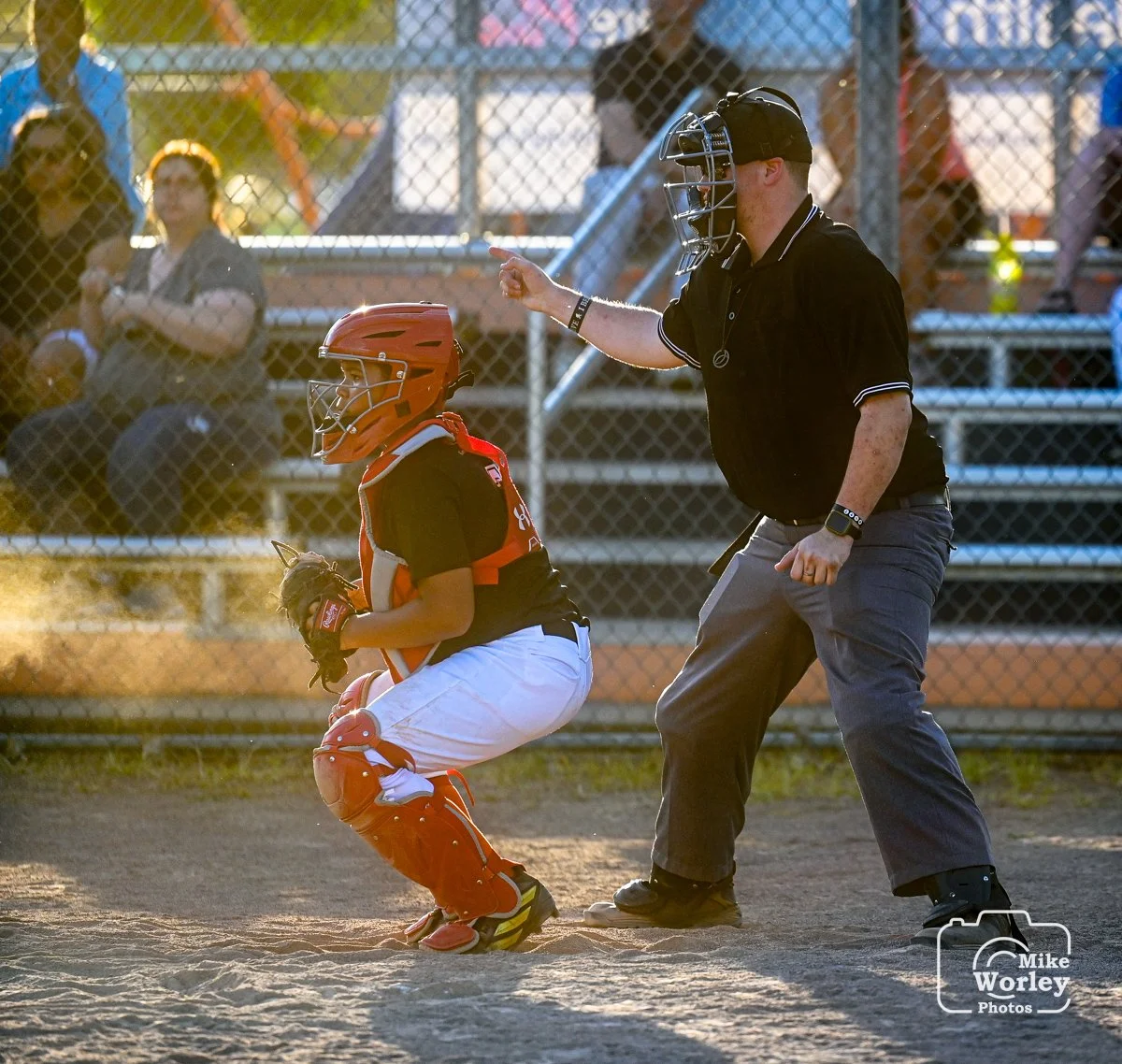So You Want to be a Sports Photographer
Whether it’s America’s Game, baseball, or any of a dozen or more sports activities, people gather every weekend of the year to watch their favorite sporting event. And at most of these events, photographers are present to capture the action. Maybe you’d like to do that, too.
Gaining access to major sports events as a photographer isn’t easy. Most major venues won’t let spectators bring in any photo gear more sophisticated than their phone. But you can still experience the joy of capturing those moments at smaller venues.
Closer to Home
For every fan who turns out for a Major League Baseball game or an NBA or NFL contest, hundreds more are taking in the sports played by their children or grandchildren. And it reality, for most of us, there’s more long-term reward in capturing the joy of sports for those kids than getting a shot of a pro player.
And best of all, you don’t need a media credential or a sideline pass to capture those moments. The fields or gyms are small enough that you can get great photos from the spectator areas. Rarely do schools or AAU venues restrict the type of camera equipment that can be brought it.
What About Equipment?
While it’s true than many people get some reasonably good shots with their phones, we’re talking here about a little higher level of expectation. But that doesn’t mean you have to have ‘pro-level’ gear to capture great sports shots.
There are, however, some basic considerations for sports photography gear.
Action: Sports are, by their very nature, action-oriented. While it is possible - occasionally - to capture a great photo with a single exposure, virtually all sports photographers shoot multiple bursts. That means having a camera capable of taking shots in rapid succession with a single press of the shutter.
But ‘rapid succession’ doesn’t mean your camera has to sound like a machine gun with every press of the shutter. Many reasonably priced DSLR and mirrorless cameras are capable of shooting at a rate of nine to 12 frames per second. Even a camera that can only capture 4-5 frames per second can be sufficient. Sure, you’ll miss some action that others may get but even top of the line pros miss great action shots now and then.
Shutter Speed: We can’t forget about shutter speed here. Sports are all about action and capturing that action requires a higher shutter speed that freezes motion. Depending on the sport and the available light, we are usually looking at shutter speeds of 1/800 or higher. And higher is better, up to about 1/2500. The only time I go above 1/2500 is for outdoor sports on a bright sunny day. But as we know, a higher shutter speed means less light gets through the shutter curtain to the sensor, so that affects the aperture you can use.
Lenses: As with all photography, the selection of lenses are one of the most important decisions. The ‘basic’ lens that virtually every sports photographer owns is a 70-200mm f/2.8. But this lens can be quite expensive. So what are the alternatives?
You are looking for two things: a telephoto lens with reasonably good range and as wide an aperture as you can get. The telephoto lens should be obvious - you want to get as close to your subject as possible. As for aperture, you have two goals as a sports photographer - let in as much light as possible because most middle school or high school gyms are notoriously under-lit, from the camera’s view. Even many college gyms can be challenging from a lighting standpoint. You also want to achieve visual separation between your subject and the background. Both of these goals are accomplished - or at least furthered - with a low f-stop / wide opening aperture.
But what if you aren’t ready to jump into that expensive f/2.8 lens? I, and may others I know, started with a 70-200mm f/4 lens. The f/4 lets in one stop of light less than the f/2.8, but it costs half as much - or less. And it will work for you in most cases. Even the lowly 18-300mm f/3.5-5.6 kit lens that came with your first camera will work, especially in outdoor venues.
Beyond the 70-200mm, the next consideration would be for a more wide-angle lens for close-up shots. Again, the favorite is a 24-70mm. It is available in both f/2.8 and f/4 versions.
Teleconverters: But what about a longer reach? Of course, longer telephoto and even prime lenses are available, but they tend to get very expensive very fast. A 500mm f/4 prime lens can set you back anywhere from $3500 to $10,000. A better alternative for those starting out is a teleconverter. This relatively inexpensive addition to your lens increases the effective range of the lens.
Teleconverters typically come in two varieties: 1.4 and 2.0 magnification. It’s a mathematical conversion: a 70-200mm lens with a 1.4 teleconverter attached in converted to a 98-280mm lens (70 x 1.4 =98 - 200 x 1.4 =280). Sounds great doesn’t it? But there’s a downside. A 1.4 teleconverter reduces available light by one stop. Thus your 70-200mm f/4 lens becomes a 98-280mm f/5.6 lens.
And a 2.0 teleconverter? Yes, your 70-200mm lens is converted to a 140-400mm lens but a 2.0 teleconverter reduces available light by two stops. So that f/4 lens is now an f/8 lens. Additionally, many 2.0 teleconverters tend to soften images, particularly at the higher end. For those reasons, I don’t recommend a 2.0 teleconverter. However, I very often use a 1.4 teleconverter. It’s just a matter of understanding the trade-offs.
It is also important to note that not all lenses will accept a teleconverter. So check with your camera store about your specific lens before buying.
Low Light Capability: Yes, those gyms can be dark, particularly to a camera. But the low-light sensitivity of camera sensors has greatly improved over the past few years. At one time, an ISO of 1600 was considered borderline for a ‘noise-free’ photo. But today, it’s not unusual to see great photos captured at much higher ISOs.
This is a result of the better sensitivity of the sensor. But it’s also a factor that post-production apps such as Adobe Lightroom have markedly improved their denoise capability. I quite often hit ISOs as high as 8000 without concern.
And this is the consideration in my book: it’s better to have a ‘noisy’ picture that’s in focus and captures the moment than to miss the shot entirely because of noise concerns.
What Makes a Great Sports Photo?
In sports photography, you are trying for what’s called “the peak moment of action.” The definition will vary based on the sport and even in different phases of a particular sport. But we’ve all seen it - the ball captured inches from the end of the bat microseconds before the batter makes contact, or the running back vaulting over the defensive line with the ball in his outstretched hand for the touchdown.
The second goal is usually framed as “two eyes and a ball.” In other words, we would like to capture the player’s eyes in clear focus with the ball somewhere in the shot. But that’s a goal, not a requirement. Maybe the players eyes are covered as in football or a soccer goalie. And maybe it’s a sport with no ball such as swimming. But the idea is to capture that ‘peak moment of action’ with the player’s eyes in focus and the object of the game - the ball - as part of the shot.
But ‘peak moment of action’ is overriding. I have several completely usable, and published, photos of the back of a volleyball player. But maybe she’s elevated and spiking the ball past a block for a kill - a peak moment of action but without showing the eyes.
The Elusive Credential
Over the years, I’ve seen numerous posts on social media asking some form of the question, “How do I get a sideline pass to take pictures at (usually a Division I college) football game?” The answer is bascially, “You can’t.” At least, not without some backing from someone the school trusts.
As I mentioned earlier, for college or pro sports, you will need a photo credential from the host institution. For college, credentials are issued by the Sports Information Department. In general, you have to be affiliated with a recognized sports media outlet to be granted a credential. While this doesn’t have to be a legacy media outlet, it has to be more than your personal website or social media page. For known media photographers, the school may issue a season media pass, but they also issue game by game passes for people like media from the visiting team’s city or area.
In many colleges, particularly Division I, that’s just the first step. If you want a sideline pass to football or basketball, you will often need a separate game-by-game sideline pass. The media credential just gets you into the press box. Sidelines are usually separate. And it’s important to know that any such credentials or passes are completely at the discretion of the issuing school. They can be recalled or cancelled at any time if you don’t follow the rules.
Many high schools have similar requirements. Although the bar isn’t quite as high to gain access, it is granted at the discretion of the particular school’s athletic director (AD).
So What Can I Do?
Let’s start with high school or even middle school. It helps a lot if you have a child or grandchild who is playing for the team. Schools and youth organizations are very concerned, and legitimately so, about people who just want to take pictures of kids. But don’t just make it about taking pictures of your child. Offer to take action photos of the entire team for the entire game, and to give those photos to the school. Be a sports photographer, not just a parent.
Second, ask in advance. The AD may want to check out your background or at a minimum, confirm that you do have a child on the team. The answer to a pass request on the afternoon of a big will almost certainly be “no” if they even respond. It’s a busy time for them.
Finally, know the rules. Yes, there are rules about where photographers can be, particularly with field or sideline passes. Middle school football is pretty much anywhere along the sidelines as long as you don’t interfere with the game. For college, it’s usually between the 25 yard line and the end line. You can be on either side of the field within those boundaries but you are stuck on which ever end of the field you’re assigned to. You can’t walk behind the team bench to change ends. For college basketball, it’s often a 3x3 box on the floor of one end of the court, among a dozen other photographers with similar assignments.
Moving Up
Ok, you’ve gained some experience photographing your kids or grandkids. You’ve build a portfolio of some good action shots. But now, you’d like to try your hand at a higher level. So you walk into the local college Sports Information Department with your middle/high school portfolio in hand and ask for that football sideline pass. Wrong! Remember, colleges give preferences to members of legitimate media outlets.
But I have a full time job. I don’t plan to work for a media outlet. Is there anything I can do?
In some cases, yes. But you have to understand the culture and the hierarchy of sports, particularly college sports. When most people think of college sports, they usually think of football or basketball - the so-called revenue sports. They have that name because, at most colleges, football and basketball (usually men’s but not always) bring in the revenue that supports the other sports. But this is the key - college student athletes who play “non-revenue” sports have parents too. And those parents, and maybe their hometown newspaper if they are from a small town, want action pictures of their kids’ sports activities.
Consider this. Sports Information almost routinely gets calls from people wanting to take photos of football or other ‘big time’ sports. Quite often, their calls aren’t even returned. But then along comes someone who says, “I'm learning sports photography and I have a portfolio of my high school work. I’d like to move to a high level but I’m willing to show you what I can do. I’d be happy to photograph tennis (or rowing or field hockey or softball). Of course, I don’t expect to be paid and I’ll share my good images with you for whatever need you have.”
There are no guarantees, but that approach just might get your foot in the door. Personally, I started with my local university shooting women’s tennis.
Then What?
If you still want to work into a higher level of sports photography, keep at it. You might learn a thing or two about a different sport along the way, but you are also becoming a known commodity to the Sports Information people.
There’s an old saying: “People do business with people they know. People do business with people recommended to them by people they know.”
Is this going to get you a sideline pass to shoot football for your college? Probably not, since colleges likely have some staff photographers and they will be the first picks to handle revenue sports. But there’s another side.
Say there’s going to be a highly contested game between your college and one located a few hundred miles away. The local newspaper might not be able to afford to send a staff photographer, so they reach out to your college’s sports information staff. “We can send anyone to this game but can you recommend someone who can get some pictures for us? We’ll pay a reasonable amount for their time.” People do business with people recommended to them by people they know. And people recommend people they know - just maybe the guy or gal who has diligently been turning in great tennis or rowing photos. And now you have that coveted pass - it’s just that you’re shooting for the ‘other guy’. And yes, I've shot many games for the opponent - as recently as four days before I’m writing this post.
Other Requests
Generally, it’s the media covering a particular sport or the institutions themselves that want photos of a game. But there are other interested parties that sometimes pop up. Every sport has some type of official regulating the play of the game. And occasionally, those officials or their professional organizations want photos of officials in action.
Even at high school and club levels, I’ve long made it a practice to get a few shots of the officials during the game. Generally, I’ve given those shots to them for free and they’ve always appreciated it. But sometimes, that can turn into a more official request. In that vein, I’ve been requested to photograph both college and professional baseball umpires at work, as well as volleyball officials.
You might be there to photograph officials but that doesn’t mean you can’t also get shots of the players themselves.
Let’s Hear From You
Do you have experience in sports photography at any level? Or are you ready to get into it? Share your thoughts on this article and your experiences in the comments below.



